01st INTERNATIONAL CONFERENCE ON
MATERIALS SCIENCE, ENGINEERING & TECHNOLOGY
Date: 27 – 29 July 2022
Venue: Virtual
THANK YOU FOR ATTENDING!
Thank you to all the participants of the 01st International Conference on Materials Science, Engineering and Technology. Our conference successfully brought together scientists, researchers, engineers, academicians, and industry professionals from across the globe to exchange visions, ideas, recent developments, and findings, as well as advanced scientific and technical knowledge in the field of materials science. The conference, held in association with the University of Queensland, Australia, from 27th to 29th July 2022. It served as a valuable platform for attendees to share knowledge, ideas, and experiences related to various aspects of materials science.
- CONFERENCE KEY DATES
May 25, 2022 Abstract Submission End
June 07, 2022 Regular Registration End
July 27, 2022 Conference Opening Ceremony
CONFERENCE CHAIR

Prof. Andrej Atrens
Division of Materials, University of Queensland, Australia
Andrej Atrens is emeritus professor in the Division of Materials, University of Queensland, Australia. He has excellent publication record in top international journals with more than 400 in the reputed journals. His H-Index is 78 (google scholar). His current research projects are in the fields of Mg corrosion, SCC and hydrogen embrittlement and his research interests are Mg corrosion, hydrogen embrittlenent and stress corrosion cracking.He received a PhD from the University of Adelaide in 1976, a DEng from the University of Queensland in 1997, and became FHEA in 2018, and also Fellow of Australia Institute of Physics and Institute of Engineers Australia.
Prof. Atrens has made significant contributions to the understanding of the service performance of engineering materials. This includes:
Related electrochemical hydrogen charging to equivalent hydrogen fugacity.
Demonstrated that there is little risk in auto service of HE for the advanced high-strength steels currently used in automobile light-weighting,
Elucidated corrosion mechanisms of magnesium alloys, stainless steels and copper alloys,
Developed a model for the patination of copper, and a procedure for an artificial patination process,
Developed an improved understanding of passivity in stainless steels and binary alloys such as Fe-Cr, Ni-Cr, Co-Cr, Fe-Ti, and Fe-Si.
Characterised the corrosion reactions, types of corrosion and the corrosion morphologies for Mg alloys and related these to alloy chemistry, metallurgy and microstructure.
Help to provide an understanding of the biocorrosion of Mg.
Produced a comprehensive explanation of the strange electrochemical behaviour of the negative difference effect, which underlies the corrosion behaviour of magnesium and its alloys.
CONFERENCE CO-CHAIR

Dr. Valentino Kaneti
Australian Institute for Bioengineering and Nanotechnology, University of Queensland, Australia
Valentino Kaneti is currently working as an Advance Queensland Industry Research Fellow at the Australian Institute for Bioengineering and Nanotechnology, The University of Queensland. To date, Dr. Kaneti has published more than 100 papers in international refereed journals with >5,700 citations (h-index of 39), including 13 ESI Highly Cited Paper as of June 2021.Dr. Kaneti focuses on the design of novel nanoporous carbon and inorganic materials with controlled structural parameters (size, shape, and porosity) to optimize their functional performance toward energy storage and conversion, sensing, and bio-related applications. In particular, he is interested in the rational design and construction of metal-organic frameworks and mesoporous materials and has demonstrated the novel self-assembly of inorganic 1D nanomaterials into 2D sheet-like structures using template-assisted approaches for supercapacitor and fuel cell applications. Finally, he has conducted several theoretical studies using density functional theory (DFT) simulations to understand the adsorption of gas molecules on various crystal facets of metal oxides.
Dr. Yusuf Valentino Kaneti received his PhD degree in 2014 from the University of New South Wales (UNSW), Sydney, Australia. After that, he joined the Monash University/University of new South Wales as a part-time postdoctoral fellow with the Laboratory of Simulation and Modeling of Particulate Systems (SIMPAS). In December 2015, he was awarded the Endeavour Australia Fellowship and participated in a 4-month research exchange at the Graduate School at Shenzhen, Tsinghua University (China) between February-July 2016 and worked on the development of anode materials for sodium-ion batteries using metal-organic framework-derived composites. In September 2016, he joined the National Institute for Materials Science (NIMS), specifically at the International Center for Materials Nanoarchitectonics (MANA) as a Japan Society for Promotion of Science (JSPS) Postdoctoral Fellow. His JSPS research focuses on the fabrication of metal-organic frameworks and mesoporous materials for energy and environmental applications. In October 2018, Dr Kaneti was awarded the MANA Research Fellowship and worked at the Nanotubes group in NIMS with research projects focusing on the self-assembly of 1D nanomaterials into 2D nanostructures and vice versa for energy storage and conversion applications. He also serves as an Editorial Board Member of Batteries (MDPI), Crystals (MDPI) and Gases (MDPI). He has obtained some highly competitive Fellowships/awards, including JSPS Fellowship, Endeavour Australia Fellowship, NIMS-MANA Fellowship, and Advance Queensland Industry Research Fellowship.
Dr. Kaneti has previously collaborated with several international companies. He has worked with NBC Meshtec Inc. (Japan) to develop mesoporous iron oxide catalysts for room-temperature carbon monoxide oxidation. He has also collaborated with the Japan Atomic Energy Agency (JAEA) to develop mesoporous alumina and alumina-titania composite adsorbents toward medical radioisotope production. Furthermore, he has work with Sensync Inc. (Indonesia) to develop metal oxide-based sensors using biomass precursors for the detection of toxic gases and to understand the underlying sensing mechanisms of these sensors toward such gases. Currently, Dr Kaneti is collaborating with AI Fluidics. Pty Ltd. (Australia) to develop point-of-care diagnostics device incorporating microfluidics and electrochemical biosensors for the detection of COVID-19 RNA.
CONFERENCE COMMITTEE
Prof. Fabio Matera, CNR-ITAE – National Research Council – Institute of Advanced Technologies for Energy “Nicola Giordano”, Italy
Prof. Koichi Niihara, Honorary Professor and Former President, Nagaoka University of Technology, Japan
Prof. Frank Cheng, Editor-in-Chief of Journal of Pipeline Science and Engineering (Elsevier) and University of Calgary, Canada
Prof. Maria Angela A. Meireles, Editor-in-Chief of The Open Food Science Journal | Associate Editor of RSC Advances and Heliyon | State University of Campinas, Brazil
Prof. Luciano Feo, University of Salerno, Italy
Dr. Tereza Paronyan, Hexalayer, LLC, United States
Prof. Jose Ygnacio Pastor, Polytechnic University of Madrid, Spain
Prof. Wei Tao Huang, Hunan Normal University, China
Prof. Jorge Almaral Sanchez, Autonomous University of Sinaloa, Mexico
Prof. Peng Shi, City University of Hong Kong, Hong Kong
Prof. Mei Zhang, Florida State University, United States
Prof. Xinhua Zhu, Nanjing University, China
Prof. Marcela Urzua, University of Chile, Chile
Prof. Ming Zheng, China University of Mining and Technology, China
Prof. Jingan Li, Southwest Jiaotong University, China
Prof. Antonio Di Bartolomeo, University of Salerno, Italy
Prof. SE Kim, Sejong University, South Korea
Prof. José Miguel Molina Jordá, University of Alicante, Spain
Prof. Asuman Celik Kucuk, Kyoto University, Japan
Prof. Arkadii Arinstein, Technion – Israel Institute of Technology, Israel
Prof. Hyung Hee Cho, Director, Yonsei University, South Korea
Prof. Ki Kang Kim, Sungkyunkwan University, South Korea
Prof. Tan Lay Poh, Nanyang Technological University, Singapore
SPEAKERS
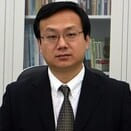
Prof. Lei Jiang
Technical Institute of Physics and Chemistry, Chinese Academy of Sciences
China

Prof. Hideomi Koinuma
CEO, SCT Inc. Ltd & University of Tokyo
Japan
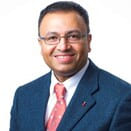
Prof. Walid A. Daoud
City University of Hong Kong
Hong Kong

Prof. Roy Shenhar
The Hebrew University of Jerusalem
Israel
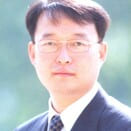
Prof. Ungyu Paik
Hanyang University
South Korea

Dr. Huacheng Zhang
RMIT University
Australia

Prof. Timothy Scott
Dean
Monash University
Australia

Dr. Marilou Cadatal Raduban
Massey University
New Zealand

Prof. Mengran Li
Delft University of Technology
Netherlands

Dr. Katarzyna Klimek
Medical University of Lublin
Poland
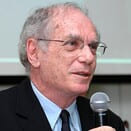
Prof. Martin Schmal
Federal University of Rio de Janeiro
Brazil
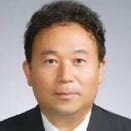
Prof. Tetsuya Yamamoto
Kochi University of Technology
Japan

Prof. Rui Novais
CICECO – Aveiro Institute of Materials
Portugal

Prof. Ta-Ya Chu
National Research Council Canada
Canada

Prof. Mircea Badescu
Jet Propulsion Laboratory
United States

Prof. Chee-Ming Chan
Universiti Tun Hussein Onn Malaysia
Malaysia
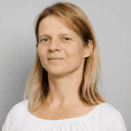
Prof. Heidemarie Schmidt
Leibniz-IPHT e.V.
Germany

Prof. Mirela Petruta Suchea
Hellenic Mediterranean University
Greece
CONFERENCE HIGHLIGHTS
- Organize up to 50+ Oral Presentations on the Latest Trend of Materials Science
- 50+ Attendees Participating from All over the World to Exchange Ideas, Build New Networks, and Foster Friendships
- Bringing together projects on New Technologies Implemented in Industrial Manufacturing
- Learn Global Market Trends for Materials Science
- Cutting-edge Keynote Addresses by Prominent Leaders from All over the World
SESSIONS
- 3D Printing
- Applications of Nanotechnology
- DNA Nanotechnology
- Functional Nanofibers
- Gold Nanoparticles
- Nano Pores
- Nano Shells
- Nano Tubes
- Nano Wires
- Nano-Biosensors
- Nano-Carriers for Drug Delivery and Drug Targeting
- Nano-characterization Techniques
- Nano-devices and Nano-systems
- Nanomaterials and Nanotechnology – Physics, Chemistry and Biology
- Nanomaterials for Drug and Gene Delivery
- Nanomaterials Synthesis
- Nano-Robotics
- Nanosurfaces and Interactions
- Nanotechnology for Vaccines
- Nanotechnology in Tissue Engineering
- Physico-Chemical Nanomaterials and Nanotechnology
- Properties of Nanostructured Materials
- siRNA Therapeutics and Nanovectors
- Synthesis of Nanoparticles for Drug Delivery
- Theranostic Nanotechnologies and Biomarkers
- Ceramic Coating
- Ceramic-Matrix Composites
- Composite and Ceramic Engineering
- Composite and Ceramic Materials: Products, Challenges and Market
- Composite and Ceramic Materials: Structure and Design
- Composite and Ceramic Materials: Synthesis and Characterization
- Composite and Ceramic Materials: Various Applications
- Construction and Building Materials
- Glass Engineering and Science
- Nano-Composites and Nano-Ceramics
- Polymer Matrix Composites
- Electronic, Magnetic and Optical Materials: Products, Challenges and Market
- Electronic, Magnetic and Optical Materials: Structure and Design
- Electronic, Magnetic and Optical Materials: Synthesis and Characterization
- Electronic, Magnetic and Optical Materials: Various Applications
- Hybrid Electronic, Magnetic and Optical Materials
- Luminescence Mechanisms and Energy Transfers
- Magnetism, Electromagnetism and Spintronics
- Magnetostrictive Materials and Device Technologies
- Nanoscale Electronic, Magnetic and Optical Materials
- Piezoelectric Materials and Device Technologies
- Batteries and Supercapacitors
- Emerging Technologies for Energy Applications
- Energy Harvesting Materials
- Energy Materials: Synthesis and Characterization
- Energy Storage Technologies
- Fuel Cells and Biofuels
- Hydrogen Energy
- Magnetocalorics
- Nanogenerator
- Nano Energy
- Nuclear Energy
- Photocatalysis and Electrocatalysis
- Photovoltaics and Optoelectronics
- Piezoelectronics
- Solar Energy Materials
- Solid Electrolyte Materials
- Solid-State Lithium-Metal
- Thermoelectricity, Piezoelectricity, and Triboelectricity
- Water Splitting Technology
- Chemical Safety and Sustainability
- Chemicals Management and Green Economy
- Environmental and Green Nanotechnology
- Green and Sustainable Chemistry Education
- Green Catalysis
- Green Chemistry in Environmental Science
- Green Fossil Energy, Biomass, and Future fuels
- Green Solvents
- Green Synthesis, Manufacturing, and Engineering Processes
- Green Technologies
- Innovation in Sustainable and Green Chemistry
- Recycling and Waste Management
- Applications of Functional Materials
- Functional Carbon/ Quantum Dots
- Functional Materials Based Technology, Innovations and Market
- Functional Materials: Synthesis and Characterization
- Functional Nanomaterials and Nanotechnology
- Functional Polymeric Materials
- Biodevice Fabrication
- Biomaterials: Structure and Design
- Biomaterials: Synthesis and Characterization
- Biomedical Applications
- Biomedical Sensors and Health Monitoring Devices
- Emerging Technologies and Biomedical Instrumentation
- Energy Harvesting Biodevices
- Imaging and Visualization Devices
- Implantable Electronics, Wearable and Mobile Devices
- Lab-on-a-Chip and Microfluidic Devices
- Nano-Biomaterials
- Radio and Photo Therapy Devices
- Application of Biosensors in Drug Delivery and Clinical Chemistry
- Bioelectronics and Bioinstrumentation
- Biological Materials
- DNA Chips
- Enzyme-Based Biosensors
- Immunosensors
- Lab-On-A-Chip
- Nanoelectronics Biosensors
- Natural and Synthetic Receptors
- Novel transducers and Photonic Sensor Technologies
- Organism- and Whole Cell-Based Biosensors
- Sensors
- μ-TAS
- Carbon Blacks
- Carbon Fibers and Filaments
- Carbon Nanotubes
- Diamond and Diamond-like Carbon
- Fullerenes
- Glassy Carbon
- Graphene Oxide
- Graphenes
- Graphite
- Porous Carbons
- Pyrolytic Carbon
- SP2 and Non-SP2 Hybridized Carbon Systems
- Ab Initio Calculations
- Computational Materials Science
- Computer-Aided Learning and Teaching
- Computer-Aided Materials Selection, Design and Manufacturing
- Computer-Integrated Material Processing Technology
- Density Functional Theory
- Finite Element Analysis and Mesoscale modelling
- Internet of Things-Based Methods
- Monte Carlo and Molecular Dynamics Techniques
- Nanoscale Modelling
- Quantum Chemical, Semi-Empirical and Classical Approaches
- 2D Materials
- Applications of Graphene
- Bio-Graphene
- Graphene Based Devices
- Graphene Based Polymers
- Graphene Nanoplatelets
- Graphene Nanotubes
- Graphene Sheets
- Graphene Technology
- Graphene: Modification and Functionalization
- Graphene: Synthesis, Characterization
- Mechanical Properties on Graphene
- Inorganic Materials Synthesis
- Lighting Materials and Technology
- Macromolecular and Nanomaterial Synthesis
- Materials Processing, Structure and Properties
- Materials Synthesis
- Metals and Alloys
- Metamaterials
- Solid state chemistry
- Structural and Spectroscopic Probing
- Synthetic materials chemistry
- Thin-film Processing
- Applications of Polymers
- Dynamics of Block Copolymers
- Dynamics of Polymer Melts and Glasses
- Functional Polymeric Materials
- Polymer Composites and Blends
- Polymer Membranes
- Polymer Structure Modification by Chemical and Physical Means
- Polymer Synthesis and Characterization
- Semiconductors
- Stimuli-Responsive and Sensory Polymers
- Thermoplastic and Functional Elastomers
- Computational Structural Mechanics
- Computer-Aided Design and Modelling
- Concrete and Masonry Structures
- Construction Technology and Methods
- Glass and Ceramics
- Innovative Solutions in Structural Design and Construction
- Materials Processing and Manufacturing
- Membrane Structures
- Metal and Alloys
- Numerical Methods and Algorithms
- Shape Memory Alloys
- Smart Materials and Structures
- Structural Analysis and Design
- Structural Failures
- Structural Stability, Safety and Reliability
- Biomolecules, Biointerfaces, and Applications
- Corrosion Engineering
- Deposition Techniques
- Nanostructured Materials, Micelles, and Colloids
- Solid Thin Films and Layers
- Surface and Interface Analysis and Properties
- Surface and Interface Phenomena
- Surface Coating Technology
- Thin Film Growth and Epitaxy
- Tribology
PUBLICATION
We collaborate with international scientific publishers, empowering scientists/researchers to get their research recognized and read by audiences.
The registered abstracts will be published on the conference website. The full paper will be published in the partners journals. All submitted papers will go through the standard review process of the journal. The full paper submission is optional.
Partners Journals: You can submit your full presenting paper in the below journal.
Nanomaterials (ISSN 2079-4991; IF 5.076) is an international peer-reviewed open access journal published monthly online by MDPI. There will be an opportunity to publish peer-reviewed and accepted papers in Nanomaterials (https://www.mdpi.com/journal/nanomaterials). MDPI offers a 10% discount on the publication fees for scholars attending the conference. For further information and details, write us to info@msiconference.com.
SPONSORS & PARTNERS
Why become a sponsor/partners/exhibitor in the materials science conferences?

Make new connections

On-site and online brand exposure

Establish strong relationships

Build your brand profile
ORGANIZATIONS THAT ATTENDED
World’s top most organizations that attended our materials science conferences